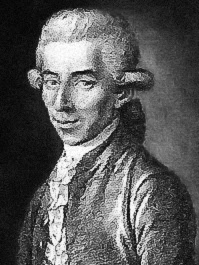Anyway, here is a bit of trivia that can relate Wolfgang Amadeus Mozart (1756-1791) to persons who are somehow relevant to the history of Magia Posthuma.
Viewers of Amadeus may have noticed a sensible character at the court of Emperor Joseph II called Baron van Swieten who is played by Jonathan Moore in the film version. This van Swieten was the son of Gerard van Swieten whose name should be well known to readers of this blog because he played a key role in establishing the Austrian law against Magia Posthuma put forth by Maria Theresa. Joseph II himself was, of course, the son of Maria Theresa.
 The baron van Swieten was a patron of many composers in Vienna of that day, including Haydn and Mozart. His full name was Gottfried van Swieten, and he lived from 1733 to 1803. His name and legacy is commemorated today by e.g. The Van Swieten Society. The photo above is from Amadeus with van Swieten in the background and F. Murray Abraham as Salieri in the foreground.
The baron van Swieten was a patron of many composers in Vienna of that day, including Haydn and Mozart. His full name was Gottfried van Swieten, and he lived from 1733 to 1803. His name and legacy is commemorated today by e.g. The Van Swieten Society. The photo above is from Amadeus with van Swieten in the background and F. Murray Abraham as Salieri in the foreground. Another link between Magia Posthuma and Mozart is Ignaz von Born (1742-1791) who was an Austrian mineralogist. He traveled through Banat, parts of present day south western Romania, researching mining and mineralogy, and wrote letters about his findings in 1770. The letters were published in 1774 as Briefe über Mineralogische Gegenstände. Some of the letters describe the habits and culture of the people living in the area. Here von Born includes a short description of burial practices carried out to prevent the dead from returning as vampires:
Another link between Magia Posthuma and Mozart is Ignaz von Born (1742-1791) who was an Austrian mineralogist. He traveled through Banat, parts of present day south western Romania, researching mining and mineralogy, and wrote letters about his findings in 1770. The letters were published in 1774 as Briefe über Mineralogische Gegenstände. Some of the letters describe the habits and culture of the people living in the area. Here von Born includes a short description of burial practices carried out to prevent the dead from returning as vampires:"Man scharrt ihn [den Todten] ein, setzt ihm ein Kreutz und einen großen Stein zum Kopfe, damit er kein Blutsäuger (Vampyr) werde, gießet Wein und räuchert um das Grab, um die Unholden und Zauberer zu vertreiben, und dann geht man nach Hause." (They scratch the corpse and put a cross on him and a big stone on his head to prevent him from becoming a bloodsucker (vampire), pour wine and burn incense around the grave to drive away witches and sorcerers, and then they go home.)
Like Mozart, von Born was a freemason and is usually considered to be the inspiration for the character Sarastro in Mozart's famous opera The Magic Flute.
On his travels Mozart also visited places that play a role in the history of the Magia Posthuma, e.g. Olomouc (Olmütz), where 11 year old Mozart got infected with smallpox in 1767, just 12 years after Viennese court physicians investigated a case of Magia Posthuma in the vicinity. It was also at Olomouc that Karl Ferdinand von Schertz published his Magia Posthuma.
So Mozart obviously lived an age when vampires were not quite a terror from the past. In fact, it seems that an author of popular fiction even has imagined Mozart as a vampire. In I, Vampire by Michael Romkey, not only Mozart turns out to be a vampire, the same goes for Cesare Borgia and Hitler!

No comments:
Post a Comment